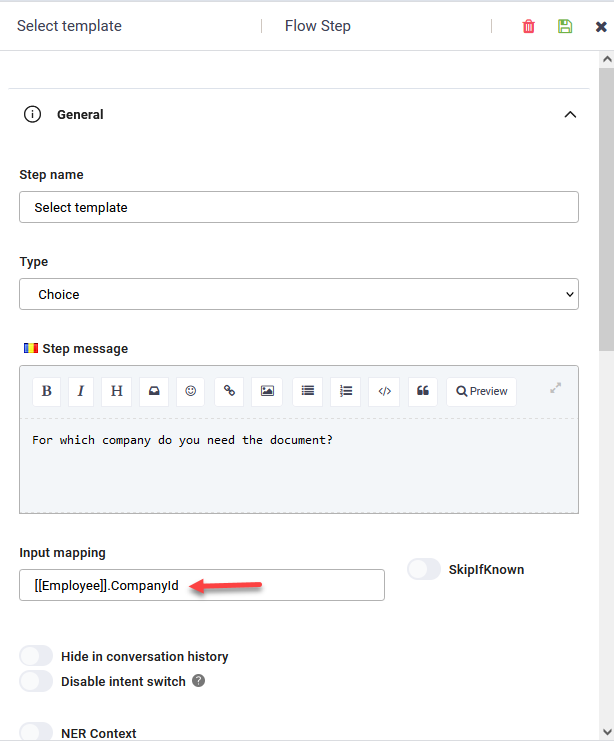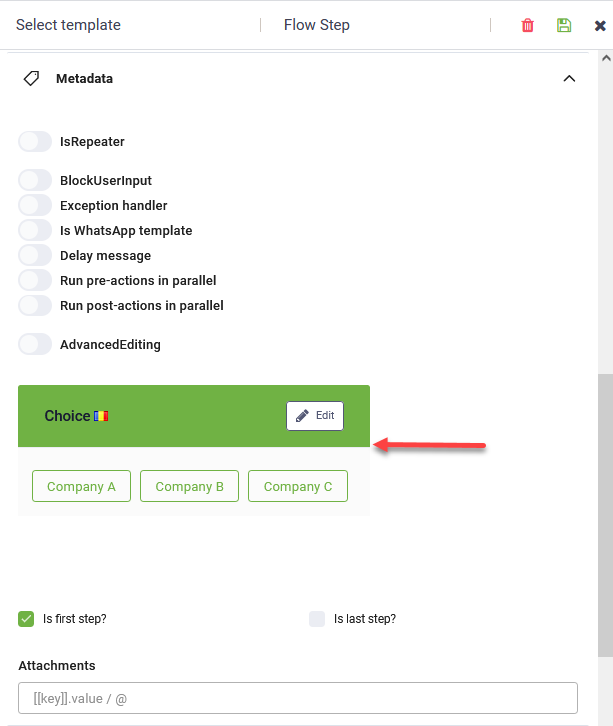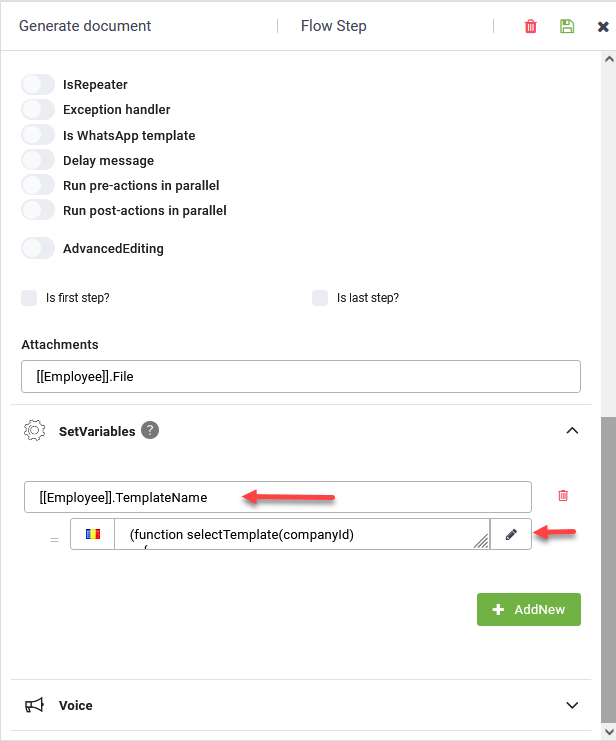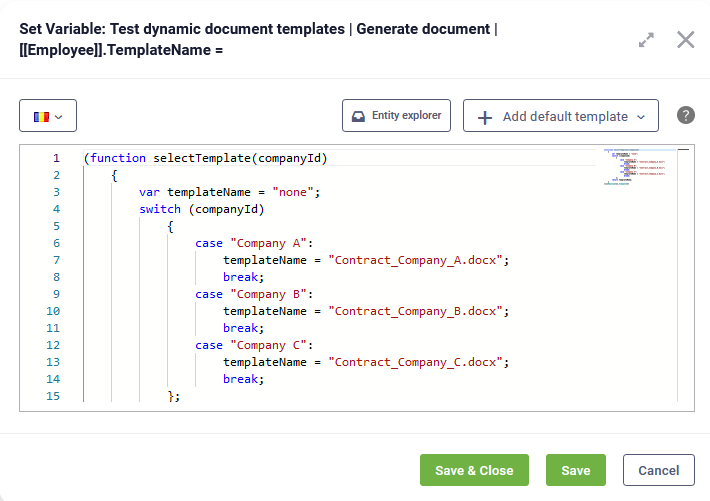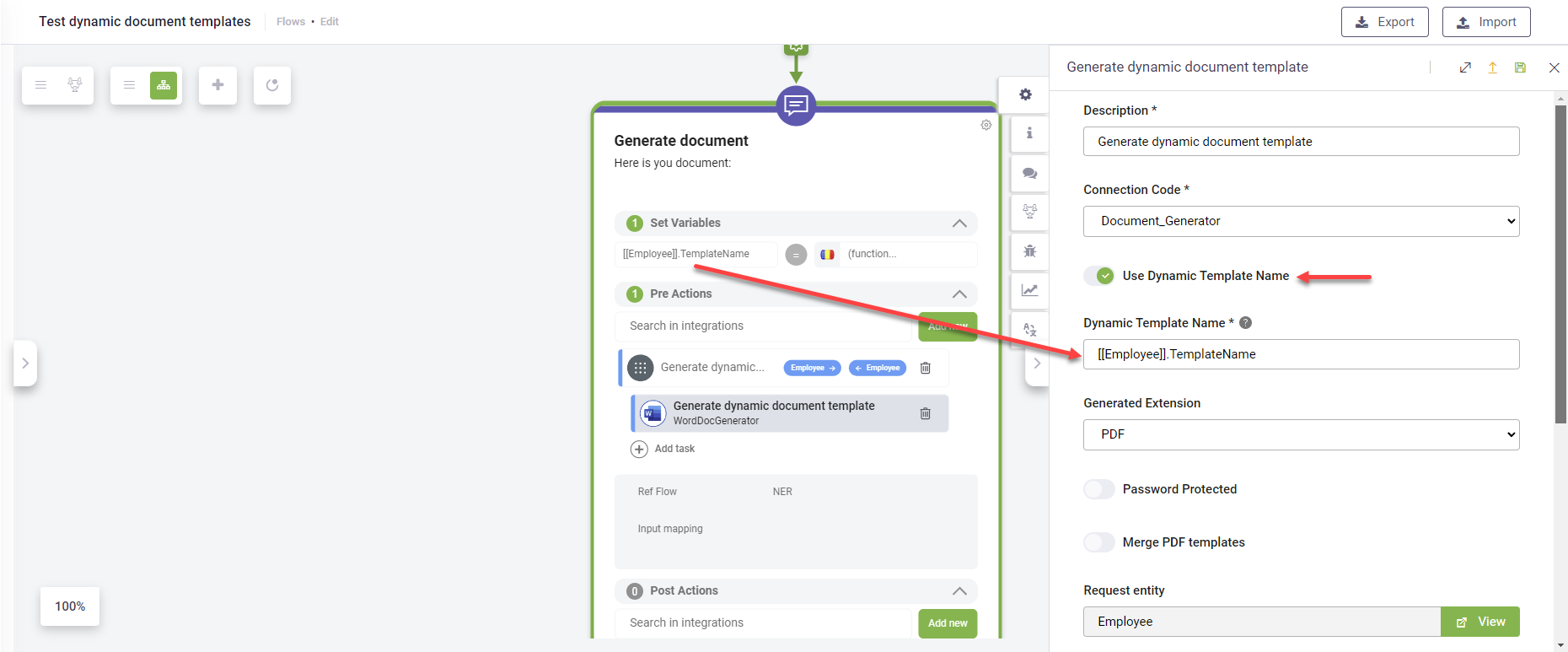Generate Documents Using Dynamic Templates
DRUID offers bot authors with a simplified way to design conversational flows for generating documents by using dynamic templates. This is particularly useful when you want to generate documents using specific templates for departments in your company or for companies within a group of companies.
Using dynamic templates eliminates the need of creating one connector action and integration task for each document template. It also simplifies the conversational flow authoring; you design a single flow step that generates documents using multiple templates as set on the flow step; no need to add more steps with conditions in the conversational flow to address each document template.
How to generate documents using dynamic templates
This section provides an example on how to generate documents specific to a company the user chooses in the chat, by using dynamic templates.
Prerequisites
- Make sure that you properly built the bot informational model (the entities and their relationships).
Step 1. Create the document templates
Create the document templates following the procedures Creating Word Document Templates and / or Creating Excel Templates.
In this example, we created three document templates shown in figure below.
Step 2. Design the flow
Create a flow that provides the user with the possibility to choose the company, capture user input and then based on it apply the specific template to generate the document:
- Add a step of type Choice and in Input mapping enter the entity field that will store the user input.
- Click the Metadata section and configure the step choices, then save the step. For more information, see Choice Steps Configuration.
- Add a step of type Message you will use to generate the document and send it to the user in the chat.
- On the step General section, provide a Step message(e.g., , "Here is you document:") and on the Metadata section, in the Attachments field, provide the entity field that stores the generated document (e.g., [[Employee]].File).
- Click the SetVariables section and set the entity field used for dynamic document template name. E.g., [[Employee]].TemplateName. You will use this on the integration task to generate documents. Use the code editor to set the variable and provide the JavaScript code that applies a specific document template for a specific company.
- Save the step.
- On the step, in the PreActions section, add connector action and integration task for document generation.
- Save the integration task.
(function selectTemplate(companyId)
{
var templateName = "none";
switch (companyId)
{
case "Company A":
templateName = "Contract_Company_A.docx";
break;
case "Company B":
templateName = "Contract_Company_B.docx";
break;
case "Company C":
templateName = "Contract_Company_C.docx";
break;
};
return templateName;
}
)([[Employee]].CompanyId)When configuring the integration task, tap on Use Dynamic Template Name and in the Dynamic Template Name field, enter the entity field used for dynamic templates, the one you have set in the SetVariables section on the step.
In the Dynamic File Name field, specify the file name of the generated document either hard coded as string (e.g., "Invoice April") or as a value from the context: an entity field (e.g., [[Employee]].Name) or a local variable.
Configure the integration task to store the generated document in a specific entity field (a field of type file created on the request entity) by providing the field name in the ProjectResultToEntityPath field on the integration task.
If the user chooses Company A in the chat, then a document will be generated using the document template Contract_Company_A.docx, and so on.

